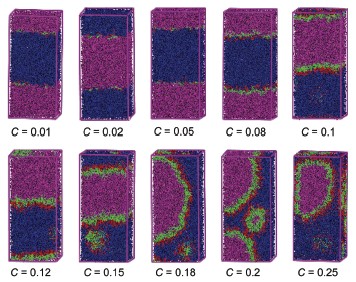| [1] Liang, X.-F.; Guo, C.; Liu, Q.-F.; Liu, H.-Z. J. Chem. Ind. Eng. 2010, 61, 1693. (梁向峰, 郭晨, 刘庆芬, 刘会洲, 化工学报, 2010, 61, 1693.) [2] Su, Y.-L.; Guo, C.; Liu, H.-Z. J. Chem. Ind. Eng. 2003, 54, 489. (苏延磊, 郭晨, 刘会洲, 化工学报, 2003, 54, 489.) [3] Lin, C.-Y.; Qiu, Y.; Jiang, L.-Q.; Zhao, J.-X. J. Fuzhou Univ. (Nat. Sci. Ed.) 2000, 28, 77. (林翠英, 邱羽, 江琳沁, 赵剑曦, 福州大学学报(自然科学版), 2000, 28, 77.) [4] Won, Y. Y.; Brannan, A. K.; Davis, H. T.; Bates, F. S. J. Phys. Chem. B 2002, 106, 3354. [5] Nolan, S. L.; Philips, R. J.; Cotts, P. M.; Dungan, S. R. J. Colloid Interface Sci. 1997, 191, 291. [6] Aswal, V. K.; Goyal, P. S.; Kohlbrecher, J.; Bahadur, P. Chem. Phys. Lett. 2001, 349, 458. [7] Schmidt, G.; Richtering, W.; Lindner, P.; Alexandridis, P. Macromolecules 1998, 31, 2293 [8] Yuan, S.-L.; Wu, R.; Cai, Z.-T. Acta Phys.-Chim. Sin. 2004, 20, 811. (苑世领, 吴锐, 蔡政亭, 物理化学学报, 2004, 20, 811.) [9] Chen, Y.; Zhong, J.; Huang, W.-Q. Chem. J. Chin. Univ. 2010, 31, 1827. (陈燕, 钟璟, 黄维秋, 高等学校化学学报, 2010, 31, 1827.) [10] Guo, S.-L.; Hou, T.-J.; Xu, X.-J. Comput. Appl. Chem. 2002, 19, 298. (郭森立, 侯廷军, 徐筱杰, 计算机与应用化学, 2002, 19, 298.) [11] Loos, K.; Müller, A. H. E. Biomacromolecules 2002, 3, 368. [12] Du, H.-B.; Zhu, J.-T.; Jiang, W. J. Phys. Chem. B 2007, 111, 1938. [13] Goldmints, I.; Yu, G.; Booth, C.; Smith, K. A.; Hatton, T. A. Langmuir 1999, 15, 1651. [14] Kloxin, C. J.; van Zanten, J. H. Macromolecules 2010, 43, 2084. [15] du Sart, G. G.; Vukovic, I.; van Ekenstein, G. A. Macromolecules 2010, 43, 2970. [16] Li, C.; Gao, Y.; Zhang, J.-J.; Zhu, J.-B.; Wu, L.-H. Acta Chim. Sinica 2011, 69, 1503. (李超, 高缘, 张建军, 朱家壁, 吴莲花, 化学学报, 2011, 69, 1503.) [17] Hoogerbrugge, P. J.; Koelman, J. M. V. A. Eur. Lett. 1992, 19, 155. [18] Koelman, J. M. V. A.; Hoogerbrugge, P. J. Eur. Lett. 1993, 21, 363. [19] Groot, R. D. Langmuir 2000, 16, 7493. [20] Zhang, X.-Q.; Yuan, S.-L.; Xu, G.-Y.; Liu, C.-B. Acta Phys.-Chim. Sin. 2007, 23, 139. (张秀青, 苑世领, 徐桂英, 刘成卜, 物理化学学报, 2007, 23, 139.) [21] Alexandridis, P.; Holzwarth, J. F.; Hatton, T. A. Macromolecules 1994, 27, 2414. [22] Wanka, G.; Hoffmann, H.; Ulbricht, W. Macromolecules 1994, 27, 4145. [23] Chu, B. Langmuir 1996, 11, 414. [24] Luo, M.-X.; Dai, L.-L. J. Phys.: Condens. Matter 2007, 19, 375109. |
